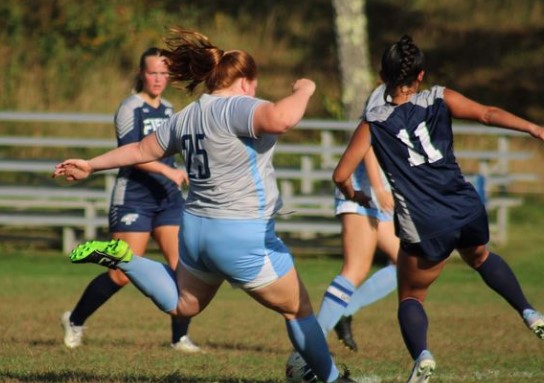The Pat-Down
Patrick Bell
Over the weekend, I watched the most recent ESPN 30 for 30, a documentary series that covers a wide range of sports stories. This particular story was about the life and death of Junior Seau, a defensive Hall of Fame player that played nearly 20 seasons in the NFL for three different teams.
It was a tough piece of film to watch because of its subject matter. Seau committed suicide in 2012 due to symptoms of chronic traumatic encephalopathy (CTE), a brain condition caused by repeated blows to the head, and his ongoing battle with depression.
Leading up to his death, the documentary details his life in chronological order, describing his promising football career and his many issues with his personal life as his career went along.
The beginning of the film describes Seau as a people person, genuinely nice, and easy to get along with. As the film goes on, he becomes more negative to himself and others. He cheats on his wife, rejects desperate pleas from his kids to be more involved with their lives and becomes addicted to gambling.
CTE had a huge part in his personality change over the course of his life.
They way that he played and the amount of hits to the head that he took definitely caused the CTE, symptoms of which are memory loss, confusion, impaired judgment, depression, aggression, and dementia. Many of these symptoms are shown throughout the Seau film.
I became angry at the sport, and more specifically the NFL for being about naive to this huge issue. Many players have been dealing with CTE during or after their playing career, leading them to end their life as tragically as Seau did.
At the end of this film, I kept thinking about Seau’s life and the many others who have had tragic lives after their playing careers, many in part due to CTE.
I don’t think CTE is ever really going to go away and will always be an issue for football to deal with. So the question lingers, do the ends justify the means?
One of the key quotes that came out of this documentary was when Seau said during his playing career, “A human being isn’t made to run at full speed and smash each other in the head, but that’s the game. That’s part of the game.”
Many players like Seau have been on board with the status quo of football since its creation. They acknowledge the sport is physical and requires sacrifice of the body in order to be a football player at any level— high school, college, and pro.
Players are encouraged to play through massive injuries and pain in order to win games throughout the season.
To the NFL’s credit, they have been improving technology to keep the players safer in all aspects.
They specifically do a better job in monitoring the head of NFL players, making sure players don’t play with concussions and are treated the right way when dealing with one.
But the work that the NFL is doing with head-related injuries will not be understood until potentially decades from now. It is impossible, as of right now, to discover who has CTE until they are deceased.
The main thing to understand is that the number of concussions sustained by a player doesn’t truly determine who has CTE; it’s the number of hits to the head that causes the brain condition. So one concussion wouldn’t necessarily give someone the long-term side effects of CTE, but for someone who plays football for most of their adolescent and young adult life, there is a greater chance in being diagnosed with that brain condition. If someone is experiencing the symptoms of CTE, they can be treated for it, but you can’t diagnose it fully till they’re dead.
Really what it comes down to are the consumers of the sport: the fans who look forward to every weekend in the fall and winter season to see the outcome of games. In each play that is run, caught, or kicked, there is some physical action happening. The plays that they are making can get violent.
Many fans of football love the violent aspect of the game and look forward to that big hit. But those big hits can lead to CTE, and as fans of that aspect, and what is more important, can endanger the health of the players.
I don’t know where football is going to go in the next couple decades. But what I do know is that football needs to look out for the health of the athletes all too willing to participate.
Seau deserved better, and the many others who experienced symptoms of CTE deserved better.










